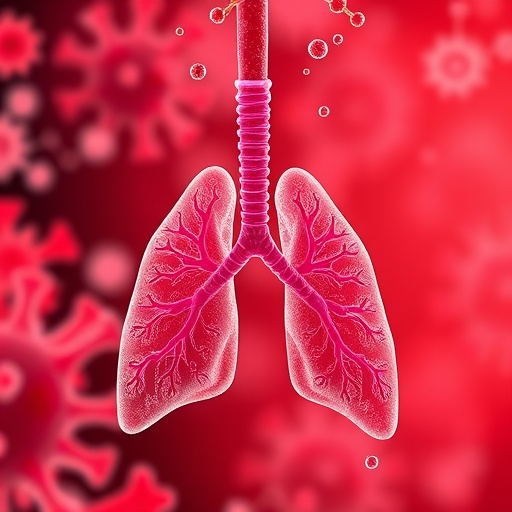BMI Shows Dual Impact on Lung Function in Asthmatic Children – European Medical Journal

Report on the Association Between Body Mass Index and Pediatric Asthma Outcomes in the Context of Sustainable Development Goals
Introduction
A cross-sectional study involving 328 children with asthma exacerbations was conducted to analyze the relationship between Body Mass Index (BMI) and pulmonary function. This report synthesizes the study’s findings, emphasizing their implications for achieving the United Nations Sustainable Development Goals (SDGs), particularly those related to health, nutrition, and inequality.
Methodology and Key Findings
The research employed linear and piecewise regression analyses to assess the correlation between BMI, BMI z-scores, and key lung function parameters. The primary findings are outlined below:
- Positive Linear Correlation: Initial analysis indicated a positive association between higher BMI and improved lung function metrics, including maximum vital capacity (VCmax), forced vital capacity (FVC), and forced expiratory volume in one second (FEV1). This relationship held after adjusting for multiple confounding variables.
- Nonlinear Threshold Effect: A critical threshold was identified where the benefits of increasing BMI reverse. Below a BMI z-score range of approximately 2.3 to 3.9, lung function improved with weight gain.
- Detrimental Impact of Excessive Weight: Beyond this critical threshold, higher BMI z-scores were linked to a significant decline in pulmonary function. Specifically, for each unit increase in the BMI z-score above 3.945, FEV1 decreased by 9.7% and peak expiratory flow (PEF) decreased by 12.2%.
Alignment with Sustainable Development Goals (SDGs)
SDG 3: Good Health and Well-being
The study’s findings directly contribute to the objectives of SDG 3 by providing critical insights into managing a prevalent non-communicable disease (NCD) in children.
- Target 3.4: By elucidating the complex role of weight in pediatric asthma, this research supports efforts to reduce premature mortality from NCDs through effective prevention and treatment. Optimized asthma management based on these findings can improve quality of life and reduce disease burden.
- Child Health: The report underscores the importance of maintaining a healthy weight range for children’s respiratory health, a fundamental component of ensuring healthy lives and promoting well-being for all at all ages.
SDG 2: Zero Hunger
This research highlights the dual challenge of malnutrition, a core focus of SDG 2, which aims to end hunger, achieve food security, and improve nutrition.
- Target 2.2: The findings demonstrate the negative health consequences at both ends of the malnutrition spectrum. While the study focuses on high BMI, the implication is that an optimal weight range is crucial, aligning with the goal to end all forms of malnutrition. The detrimental effects of excessive weight on lung function in asthmatic children underscore the “obesity” aspect of malnutrition.
SDG 10: Reduced Inequalities
Asthma and obesity disproportionately affect children from lower socioeconomic backgrounds, making this research relevant to reducing health disparities.
- Target 10.2: By providing evidence for nuanced, weight-guided clinical strategies, the findings can inform targeted public health interventions. Such interventions can help mitigate the disproportionate impact of severe asthma on vulnerable populations, thereby promoting social and economic inclusion and reducing inequalities in health outcomes.
Conclusion and Recommendations
Clinical and Public Health Implications
The study reveals a complex, nonlinear relationship between body weight and pulmonary function in asthmatic children. A moderate BMI appears to support lung function, whereas excessive weight is clearly detrimental. These insights necessitate a shift towards more personalized and weight-conscious asthma management strategies.
Recommendations for SDG Advancement
To align clinical practice with global health goals, the following actions are recommended:
- Integrate routine BMI z-score monitoring and nuanced weight management guidance into standard pediatric asthma care protocols.
- Develop public health campaigns that promote healthy nutrition and physical activity to help children maintain a BMI within the optimal range for respiratory health, contributing directly to SDGs 2 and 3.
- Utilize these findings to design targeted interventions for at-risk communities to address the interconnected challenges of poverty, obesity, and asthma, thereby advancing SDG 10.
SDGs, Targets, and Indicators Analysis
1. Which SDGs are addressed or connected to the issues highlighted in the article?
-
SDG 3: Good Health and Well-being
- The article directly relates to this goal by focusing on the health of children with asthma, a chronic non-communicable disease. It explores factors (BMI) that influence health outcomes and discusses clinical implications for managing the disease to improve the well-being of this specific population group.
-
SDG 2: Zero Hunger
- While not about hunger, this goal aims to end all forms of malnutrition. The article’s focus on the detrimental effects of high BMI z-scores connects directly to the issue of overweight and obesity, which is a form of malnutrition. The study highlights how excessive weight negatively impacts the health of children, aligning with the goal’s objective to address nutritional needs.
2. What specific targets under those SDGs can be identified based on the article’s content?
-
Target 3.4: By 2030, reduce by one third premature mortality from non-communicable diseases through prevention and treatment and promote mental health and well-being.
- Asthma is a chronic respiratory illness, which is a major non-communicable disease (NCD). The article’s research into how BMI affects lung function and its suggestion to incorporate “weight-guided strategies into asthma management plans” directly contribute to the “prevention and treatment” aspect of this target. Optimizing respiratory outcomes in children helps manage the long-term burden of this NCD.
-
Target 2.2: By 2030, end all forms of malnutrition, including achieving, by 2025, the internationally agreed targets on stunting and wasting in children under 5 years of age, and address the nutritional needs of adolescent girls, pregnant and lactating women and older persons.
- The article’s core finding is that high BMI z-scores are detrimental to lung function in asthmatic children. This directly addresses the problem of overweight/obesity in children, a critical form of malnutrition that this target seeks to end. The study provides evidence for the negative health consequences of this form of malnutrition, reinforcing the importance of addressing it.
3. Are there any indicators mentioned or implied in the article that can be used to measure progress towards the identified targets?
-
Implied Indicators for Target 3.4
- The article does not mention mortality rates (the official indicator 3.4.1), but it extensively discusses clinical measures of lung function that serve as proxy indicators for the management and severity of a chronic respiratory disease. These include:
- Forced Expiratory Volume in one second (FEV1)
- Peak Expiratory Flow (PEF)
The article states that for each unit increase in BMI z-score above a certain threshold, “FEV1 decreased by 9.7% and PEF by 12.2%.” These metrics are used to monitor the health status of individuals with asthma and measure the effectiveness of treatment strategies, thereby tracking progress in managing NCDs.
- The article does not mention mortality rates (the official indicator 3.4.1), but it extensively discusses clinical measures of lung function that serve as proxy indicators for the management and severity of a chronic respiratory disease. These include:
-
Directly Mentioned Indicator for Target 2.2
- The article explicitly and repeatedly uses BMI z-scores to quantify the body weight of the children in the study. The BMI-for-age z-score is a standard metric used globally to assess overweight and obesity in children and directly aligns with the official indicator 2.2.2 (Prevalence of malnutrition), which includes measuring the prevalence of overweight children. The study’s identification of a critical threshold for BMI z-scores (2.3 to 3.9) demonstrates its direct use as an indicator of a health-impacting nutritional problem.
Summary Table: SDGs, Targets, and Indicators
| SDGs | Targets | Indicators |
|---|---|---|
| SDG 3: Good Health and Well-being | Target 3.4: Reduce premature mortality from non-communicable diseases (NCDs) through prevention and treatment. | Implied clinical indicators for managing a chronic respiratory disease: Forced Expiratory Volume in one second (FEV1) and Peak Expiratory Flow (PEF). |
| SDG 2: Zero Hunger | Target 2.2: By 2030, end all forms of malnutrition. | Directly mentioned indicator for measuring overweight/obesity in children: BMI z-scores. |
Source: emjreviews.com
What is Your Reaction?
 Like
0
Like
0
 Dislike
0
Dislike
0
 Love
0
Love
0
 Funny
0
Funny
0
 Angry
0
Angry
0
 Sad
0
Sad
0
 Wow
0
Wow
0




















































.jpg.webp?itok=0ZsAnae9#)



















:focal(1500,1000)/https://media.globalcitizen.org/a6/9a/a69a4720-d8a1-4715-b596-18738d03c05c/rotary_polio_hero_image.jpg?#)







